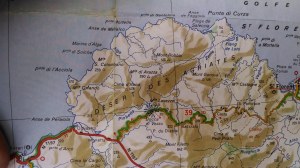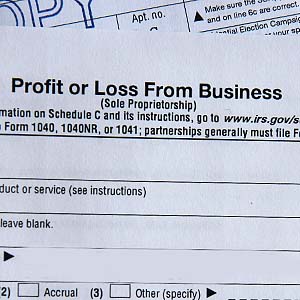By Caitlin Kelly
I started traveling young — when my parents removed the back seat of our family car and drove from Vancouver, my birthplace, to Mexico, a country I’ve since visited many times. I was two.
So constant motion and long-distance travel just feel normal to me!
In the next few weeks, we’ll be in Pennsylvania, near New Hope; in D.C. and suburban Maryland and on the Delaware River, each time visiting with friends who live there. I love getting away, even for a few days.
In December, Jose and I fly to Paris for Christmas, where we’ve been loaned an apartment. I then have five days in London alone visiting another friend, then another week alone there to do….I have no idea!
Which is my definition of bliss.
Berlin? Amsterdam? Antwerp? A quick flight to my new friend in Bahrain?
Nothing in the world makes me happier than a travel adventure.
Here, in no special order, are some of my favorite places around the world:


The West Village and East Village of Manhattan
Having lived in a suburb of New York City for more than 20 years, I never tire of wandering these two quieter and residential edges of the city: battered 19th-century doors and weathered stone steps, enormous 18th-cenury churches, cobblestoned, tree-lined streets and elegant brownstone houses with their ornate black metal railings and tall, narrow windowed doors. The area’s many cafes, restaurants and small shops include Porto Rico for coffee and tea, Bosie’s or Tea and Sympathy for a seated afternoon tea and Morandi for spaghetti carbonara. The best perfume shop in the city is on Christopher Street, Aedes de Venustas.
Yorkville, Toronto
I’ve been visiting this chic spot since my childhood in Toronto. The Papery sells lovely stationery; the Craft Ontario shop offers terrific and affordable pottery, jewelry and Eskimo art a new store, Ca Va de Soi, recently opened there, selling the loveliest women’s sweaters. (Queen Street West gets all the attention. I like it a lot, but Yorkville is easier to manage, cleaner and safer.)
San Francisco
Such an elegant city! Spectacular views, great sailing, that bridge, the beaches and Marin County, a landscape of staggering beauty. I ate here, at the Presidio Social Club, in 2012 and loved every minute of it — a former military barracks set in a park. Sacramento Street has dozens of small, gorgeous shops.
Machu Picchu, Peru
Watching the sun rise, filling every valley in the Andes as it came towards us, remains one of the highlights of my life.

Corsica
I spent five amazing days here, alone, traveling the north of this island by mo-ped, with a top speed of about 45 mph. It was July and the heated maquis, the scrubby fragrant underbrush, smelled like very good pipe tobacco. Craggy mountains, deep valleys, steep oceanside cliffs. Great food, welcoming people. I wept so hard when the plane took off for Nice the poor flight attendant thought I was injured or dying. Few places have touched me as deeply.
Kenya and Tanzania
I saw both, on safari, in my 20s. The Maasai Mara in Kenya and Ngorongoro Crater in Tanzania are unforgettably beautiful, filled with wild animals. It’s expensive to get there, but worth every penny to see a landscape that reminds us we’re only one late-arriving species. (Once you see animals in the wild, zoos seem sad and pointless.)
Mae Hong Son, Ko Phi Phi, Bangkok, Thailand
I spent 21 days in Thailand in January 1994 and remember every detail. MHS is a tiny town in the far north; KPP is a sliver of an island two hours by boat from the southern town of Krabi and crowded, humid Bangkok feels like an out-take from Blade Runner. I loved everything about my time there: food, people, flowers, astounding landscapes. If only it wasn’t 19 hours’ flying time away!
Stockholm
Oddly, we went there in November, a time of year when the sun barely rises at 8:30 and is gone by 3:00 p.m. It was staggeringly expensive, but worth it. The colors! The light! I loved the Vasa Museum — a ship launched with great fanfare in 1628, and which promptly sank in the harbor. It’s amazing — you climb a scaffolding so you’re literally face to face with history. I loved everything about this city, especially its attention to design, detail and light. I’m eager to return, preferably in summer.

The Eastern Townships, Quebec
We return every two years to Manoir Hovey, a five-star inn on Lake Massawippi. The area itself is lovely in every season, dotted with small towns and a gently rolling landscape. There’s skiing, horseback riding, winding roads to cycle, a stunning monastery — and Montreal 90 minutes north. If you’re a fan of best-selling mystery writer Louise Penny, this region will feel familiar, as that’s where she lives, and sets her stories.
The Grand Canyon
If you make one journey in your lifetime, make it here. Seriously. And don’t just drive to the edge, snap a few pics and drive away…You must walk deep into it (twice as long to come back up! take plenty of water!) to best experience a place that so powerfully reminds us what a mere eye-blink in time our lives represent. The light, the silence, the hawks and foxes and fossils…Few places so richly reward sitting still for an hour just to watch the light shifting and the landscape changing every minute as it does.
Ireland
I’ve been, (so far), four times; my father owned a house near Galway City for a few years. Hard to name anything I don’t love about this small, friendly, gorgeous country….not to mention my heritage! My great-grandfather was a schoolteacher in Rathmullan, Co. Donegal. Get out to the Aran Islands top see shaggy cows the exact color of Guinness, or wander the streets of Dublin. For a bit of craic, try the annual matchmakers festival in Lisdoonvarna, which I wrote about for the Washington Post. Lots of shy bachelor farmers!

The Hudson Valley, New York
Home! I moved here in 1989 and love its history, landscapes, the Palisades, the Hudson River. The river towns — Irvington, Tarrytown, Ossining — line the Hudson, with quiet parks and access to the water. Lots of great restaurants and cafes…ancient churches and graveyards…winding roads, fantastic views. Visit Olana to see a spectacular example of 19th century architecture and West Point to visit an American icon.

(all images, Caitlin Kelly)
What are some of your favorite spots?























